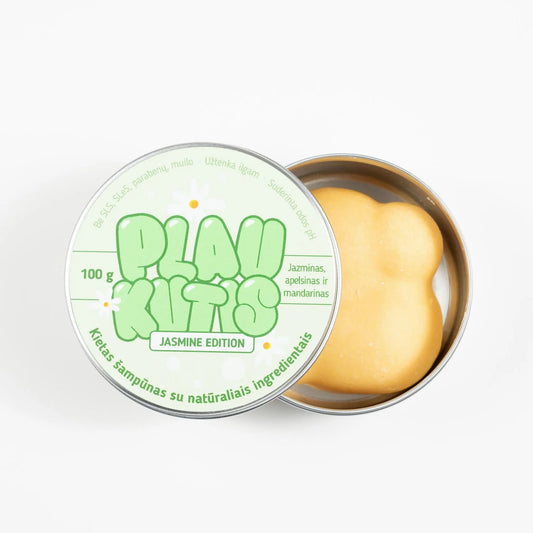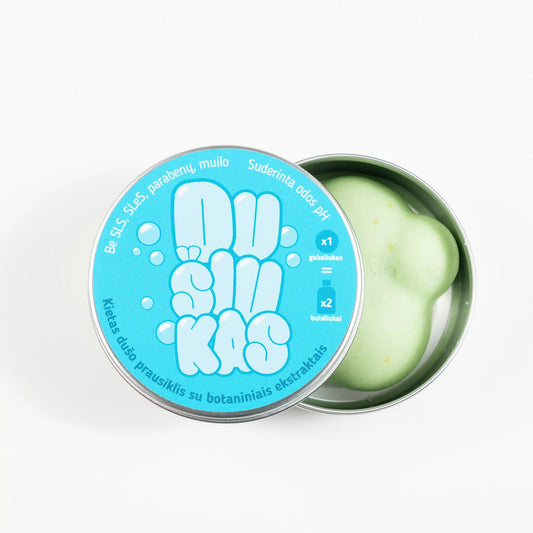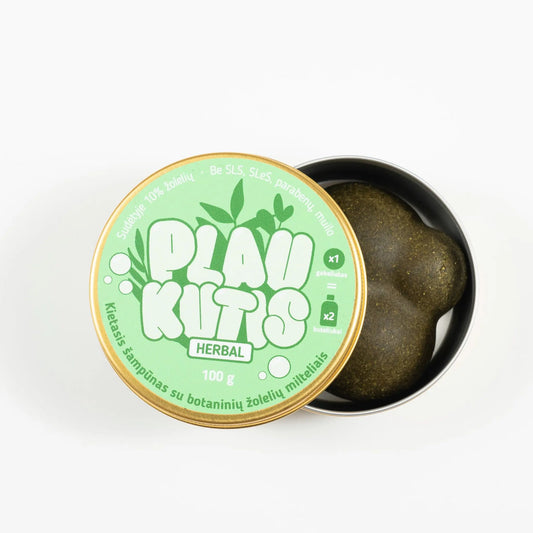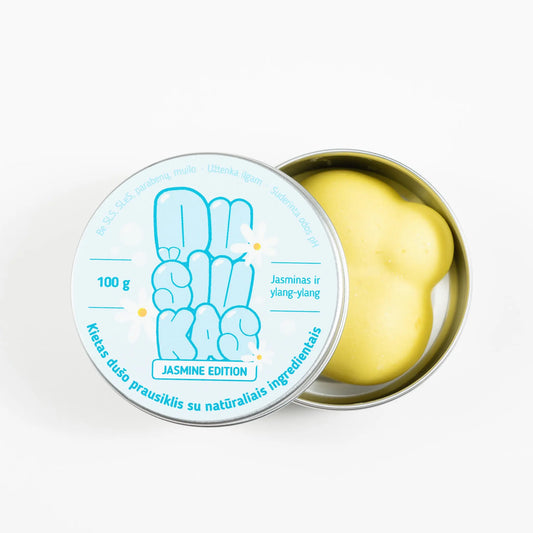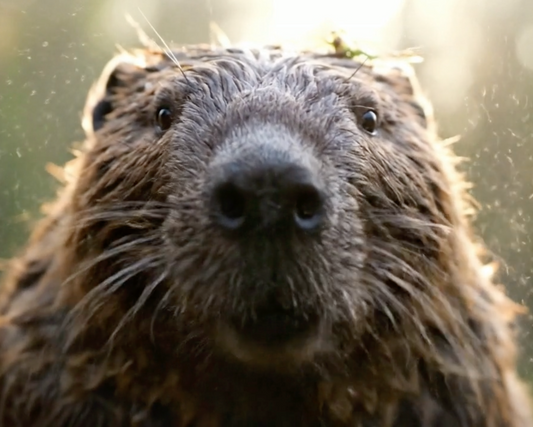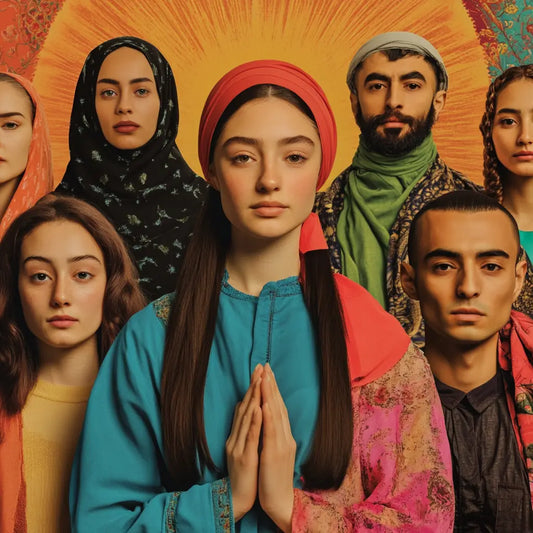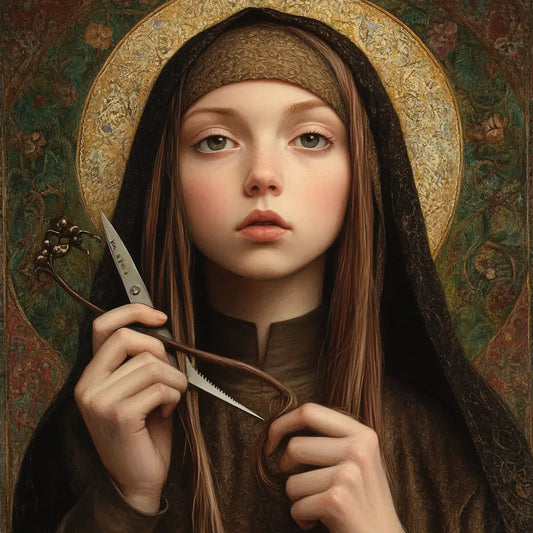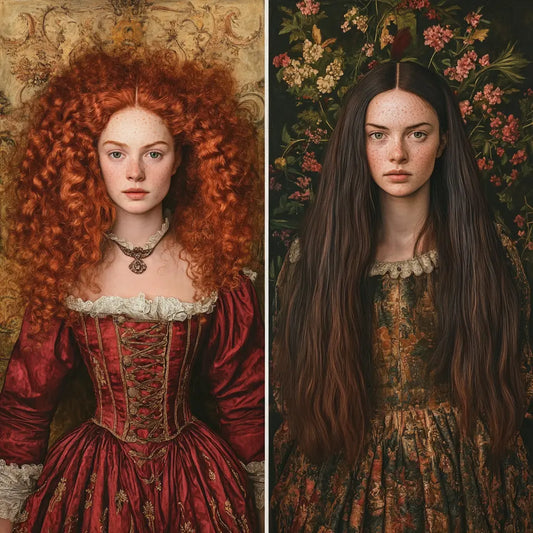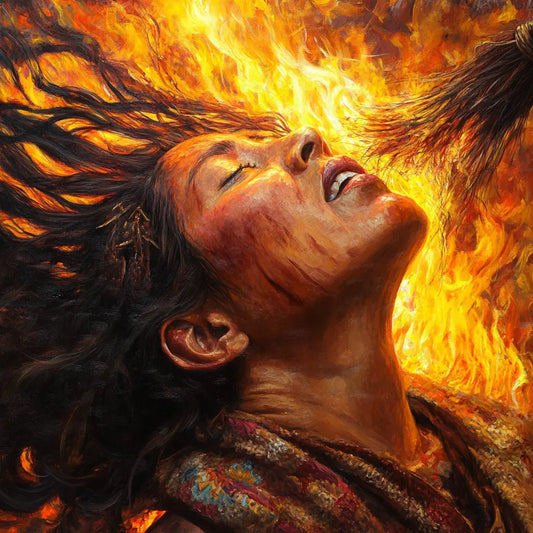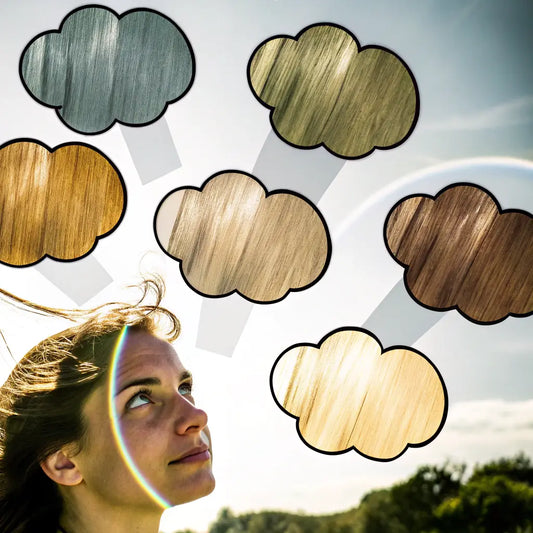In ancient Mesopotamia, hair care was not just a beauty ritual – it was closely linked to personal identity, status and even spirituality. The Mesopotamians considered hair a symbol of power and social status, so proper care for it was a daily ritual for both men and women. Beautiful and healthy hair was an important part of personal presentation.

Their techniques, tools, and natural hair care products were surprisingly advanced for their time. These ancient methods give us a better understanding of how early civilizations took care of their beauty and health. Although hair care seems very modern today, many modern beauty rituals can be traced back to Mesopotamian traditions.
In this article, we will explore the tools, ingredients, and rituals that formed the basis of Mesopotamian hair care, and compare these ancient methods with modern principles of organic beauty care.
Hair care tools and ingredients
Hair care in ancient Mesopotamia was not limited to hairstyles. The people of this civilization used various tools and means to keep their hair healthy and neat. The great attention to beautiful and well-groomed hair led to the emergence of various ingenious tools and natural remedies for both practical and aesthetic hair care.

Hair care tools
- Combs : Mesopotamians used simple but effective tools, such as combs, to comb and style their hair. Combs were usually made of wood, bone, or ivory. Some combs were intricately carved, especially those belonging to higher status individuals. Combs served two functions—one side had fine teeth for thorough combing, the other side had wider teeth for everyday use.
- Scissors and Razors : To maintain a neat appearance, Mesopotamians used early versions of scissors and razors. Men often trimmed their beards and hair, especially in the military or priestly classes, where appearance was of utmost importance. Although these tools were simpler than today's, they were essential for maintaining personal hygiene.
- Hairpins and ribbons : For those with long hair, especially women, hairpins and ribbons were essential accessories. Made of wood, bone, or metal, the pins were often decorated with intricate patterns. They helped secure intricate hairstyles, while ribbons, made of fabric or leather, kept hair neat during daily activities.
- Perfume Bottles and Applicators : Fragrant oils and perfumes were an integral part of beauty care. People would apply oils to their hair to nourish it, and perfume bottles, usually made of clay or glass, were used to hold and apply these scents. It was believed that having pleasant-smelling hair not only adorned a person but also conferred status.

Natural hair care products
The Mesopotamians had access to a wide range of natural remedies that helped maintain healthy, shiny hair. These remedies were carefully selected for their beneficial properties, and many of them are still used today.
- Oils : Oils were a staple in Mesopotamian hair care. Olive oil, almond oil, and sesame oil were the most common choices. These oils were used to nourish the hair and protect it from the dry, hot climate. They also added shine and smoothness to the hair. Oiling was a daily practice, similar to the hair serums or conditioners used today.
- Herbs : Various herbs were incorporated into hair care. For example, rosemary and thyme were used for their pleasant scent and cleansing properties. These herbs were often mixed with oils or made into pastes that were applied to the scalp and hair to promote growth and health.
- Clay and Mud : Clay and mud were natural cleansing products in ancient Mesopotamia. These materials were used in a similar way to how we use shampoos and conditioners today. Clay had natural properties that absorbed oils and dirt, leaving hair clean and fresh.
- Perfume : Mesopotamians valued pleasant-smelling hair and used natural perfumes made from flowers, herbs, and oils. Jasmine, myrrh, and frankincense were popular choices. Perfumed oils were applied to the hair to make the scent last longer and add charm to the person.
- Beeswax : Although not as commonly used as oils, beeswax was used for some hair styles. Beeswax acted as a natural hair gel, providing structure to intricate hairstyles and helping to keep hair smooth.
Hair care rituals
Hair care in Mesopotamia was not limited to the use of appropriate tools and ingredients. The Mesopotamians had elaborate hair care rituals that were often associated with religious and cultural ceremonies. These rituals demonstrated a deep connection between beauty, spirituality, and social life.
Hair washing and cleaning
Washing hair was a key aspect of Mesopotamian hair care. The hot, dry climate dried and weakened hair, so it needed to be washed regularly with natural remedies such as water, clay, or herbal infusions. Clean hair was believed to reflect inner beauty and purity.
Using clay as a cleansing agent, Mesopotamians removed dirt and oils from their hair. After washing, they would apply oil to restore moisture and shine to the hair. This practice was similar to modern-day “oil cleansing,” where oils are used not only for nourishment but also for cleansing.
Oiling and feeding
Oiling after washing was an important part of maintaining hair health. Both men and women oiled their hair daily. Oiling not only nourished the hair, but also protected it from environmental damage. Oils were applied from root to tip, massaging the scalp to stimulate blood circulation and hair growth. This practice is reminiscent of modern scalp massage treatments, which aim to strengthen hair and keep it healthy from the roots.
Hair styling and braiding
Styling was also an important aspect of hair care, especially for women of higher social classes. Hairstyles could be elaborate, with braids, ponytails, and twists formed into various patterns. Pins and ribbons were used to hold these hairstyles in place. Some women even used clay or beeswax to give their hair structure or additional texture.
The time and effort spent on hairstyles was enormous, as hair reflected a person's social status. Women of higher class had maids or hairdressers to help them style their hair daily, while women of lower status kept their hairstyles simpler but neat.

Hair care in religious and ceremonial life
Hair care in Mesopotamia was also associated with religious and ceremonial practices. Priests, for example, often shaved their heads as a symbol of purity and devotion. Hair was also used as an offering in religious rituals. During funerals or special ceremonies, it was common for people to cut or shave off part of their hair as a sign of respect or mourning.
Hair also played a symbolic role in wedding ceremonies. Brides often adorned their hair with elaborate hairstyles decorated with gold, beads, and flowers. These hairstyles symbolized their transition from virginity to married life and were an important part of wedding rituals.

Ancient hair care and modern sustainable practices
Interestingly, many of the ancient Mesopotamian hair care methods are making a comeback in the modern beauty world. The use of natural oils, herbs, and clays is now associated with eco-friendly, sustainable beauty products. Today, as we become more concerned about our environmental impact, a return to natural remedies feels like a return to ancient wisdom.
The resurgence of natural ingredients
The oils that the Mesopotamians treasured for their hair—olive, almond, and sesame oils—are now the foundation of natural hair care lines. These oils are prized for their moisturizing properties and ability to strengthen hair, without any of the chemical additives found in today’s products. Additionally, clay and mud masks, which the Mesopotamians used to cleanse their hair, are also popular for their detoxifying properties.

The popularity of solid shampoos
Another similarity between ancient methods and modern trends is the rise of solid shampoos. The Mesopotamians did not use liquid shampoos, but their reliance on natural clays and oils reflects the idea of solid shampoos today. Solid shampoos are often made with natural ingredients such as clay, herbs and essential oils, reminiscent of ancient methods. This shift towards solid shampoos not only contributes to healthier hair, but also reduces plastic waste, so it is beneficial for both beauty and the environment.
Interesting facts about Mesopotamian hair care
Here are some fun, little-known facts about Mesopotamian hair care:
- Hair Dye : The Mesopotamians used natural substances such as henna to dye their hair. Henna gave the hair a reddish hue, which was fashionable at the time.
- Early versions of wigs : Some of the wealthier Mesopotamians used early versions of wigs. These wigs were made from human or animal hair and were often worn on special occasions.
- Perfumed hair : Daily perfumed hair was a common practice. Perfumed hair was considered a sign of cleanliness and high social status.
- Hair offerings : In some religious rituals, people offered locks of their hair to the gods as a symbol of devotion or sacrifice.
- Exquisite Bridal Hairstyles : Brides would spend hours styling intricate hairstyles before their weddings, often using gold threads and beads as embellishments.

Practical tips
Even though we don't live in ancient Mesopotamia, we can still apply some of their hair care wisdom:
- Use oils : Incorporate natural oils like olive or almond oil into your hair care routine. These oils can deeply nourish and moisturize your hair.
- Try a clay cleanse : Swap your shampoo for a clay-based cleanser. It's a natural way to remove dirt while preserving your hair's natural moisture.
- Experiment with braids : Take a cue from Mesopotamian hairstyles and incorporate braids into your everyday style. Braids are not only stylish, but they also help protect your hair.
- Go plastic-free : Consider switching to bar shampoos. They're eco-friendly, gentle on your hair, and help reduce plastic waste.
Frequently asked questions
-
Did ancient Mesopotamians wash their hair often?
- Yes, washing hair was an important part of their care, especially using clay and oils to cleanse and nourish.
-
What oils did they use?
- Olive, almond, and sesame oils were the most popular for their moisturizing and nourishing properties.
-
How did they style their hair?
- They used braids, ponytails, and twists, which they secured with pins and ribbons. Women of the upper class decorated their hair with beads, gold, and ribbons.
-
Did men also take care of their hair?
- Of course. Men took pride in the care of their hair and beards, using scissors and oils to maintain a neat appearance.
-
Are Mesopotamian hair care methods still relevant today?
- Yes! Many modern hair care rituals, such as the use of oils and the inclusion of natural remedies, are inspired by ancient traditions.
Conclusion
Hair care in ancient Mesopotamia was more than just a beauty ritual – it reflected a fusion of beauty, culture and spirituality. The use of natural ingredients and a daily focus on hair health have inspired many modern sustainable beauty trends. By looking back to these ancient methods, we can find healthier and more environmentally friendly ways to care for our hair.
